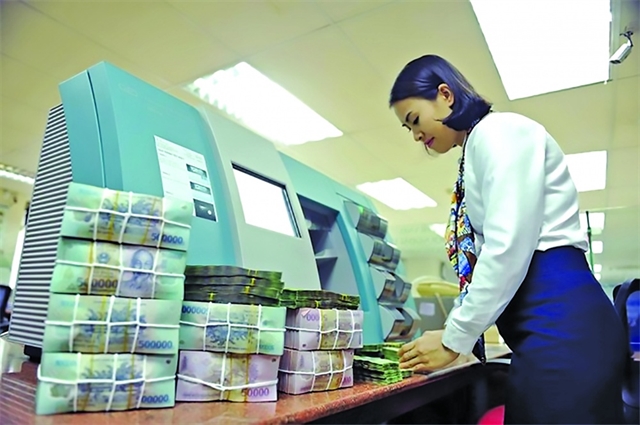The capital raising race has become more active again in the fourth quarter of 2025, particularly among joint stock commercial banks, as they look to capture high capital demand at the end of the year and narrow the gap between mobilisation and lending growth.

HÀ NỘI — With year-end credit demand surging and liquidity tightening, banks are once again upping the stakes in Việt Nam’s deposit rate race, which has heated up markedly in the fourth quarter of 2025 after months of little movement.
Statistics showed that 23 out of 35 banks currently list deposit interest rates of 4 per cent per year or higher for terms of less than six months, with some pushing rates to the 4.75 per cent per year cap regulated by the State Bank of Vietnam (SBV).
Bac A Bank lists an interest rate of 4.75 per cent per year for terms of 3-5 months for deposits of more than VNĐ1 billion.
MBV has also recently increased its online deposit interest rate for terms of 3-5 months to 4.75 per cent per year and for terms of 1-2 months to 4.6 per cent per year.
Eximbank applies an interest rate of 4.7 per cent per year for online deposits of 3-5 months on weekends including Saturdays and Sundays, while VCBNeo currently lists an interest rate of 4.7 per cent per year for online deposits of five months.
Many other banks also list interest rates of 4.5-4.6 per cent per year for deposits under six months, such as BaoVietBank, BVBank, VikkiBank, VietBank, OCB and NCB.
According to experts, the widespread interest rate hikes show that the capital raising race has become more active again in the fourth quarter of 2025, particularly among joint stock commercial banks, as they look to capture high capital demand at the end of the year and narrow the gap between mobilisation and lending growth.
Previously, many banks recorded loan growth far exceeding mobilisation in the first nine months of this year, which has forced them to increase deposit attraction to ensure capital safety ratios.
Experts from KB Securities Company said that credit for the whole banking system as of the end of September 2025 grew by 13.4 per cent, the highest growth rate compared with the same period in recent years. Meanwhile, mobilisation growth reached 9.7 per cent, creating a significant gap compared with strong credit growth.
According to the experts, with the SBV’s orientation of loosening monetary policy throughout this year, interest rates are generally still relatively stable. However, some banks have recorded credit growth of more than 20 per cent in the first nine months of the year, which may put pressure on deposit interest rates.
Experts from Vietcombank Securities Company also forecast that the room for reducing deposit interest rates will be limited in the coming time. Instead, there might be a trend of slight interest rate increase due to three factors.
First, they explain that credit is likely to accelerate at the end of the year when the SBV loosens the credit growth target, forcing banks — especially joint stock commercial banks — to boost capital mobilisation, which could increase the risk of local liquidity shortage.
Second, pressure on the USD/VNĐ exchange rate still exists, which will hinder the SBV from cutting rates.
Finally, the real estate market and financial assets are heating up, which is causing an increase in demand for risky credit. It will create an indirect driver for adjusting deposit interest rates to a reasonable level to control capital flows.
According to Vũ Minh Trường, Director of VPBank’s Capital and Financial Markets Division, the situation of credit increasing faster than mobilisation has been going on for a long time, causing pressure on liquidity and interest rates in the coming time.
The indicators have been continuously increasing recently, pushing the banking system's loan-to-deposit ratio (LDR) relatively high. These are factors showing that the pressure to increase interest rates is very clear. — BIZHUB/VNS
- Tags
- banking





